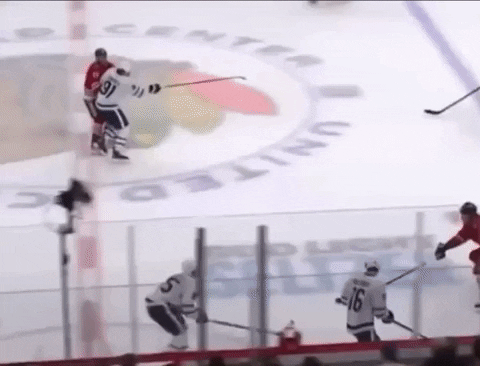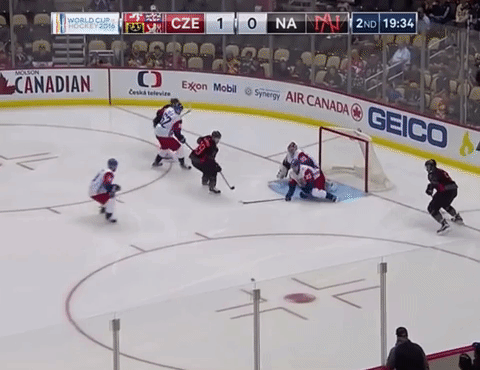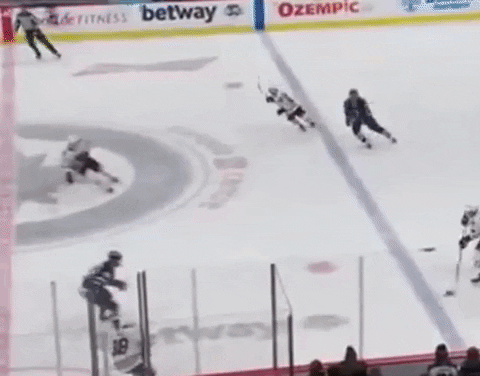Hockey Tactics: Eliminating Freedom Of Movement
Taking away an opponent’s freedom of movement by getting the in way, legally.
FoM is important in the development of battle tactics, operations, and strategies.
Freedom of movement (FoM) = Actual or perceived degree to which people can move from place to place within or in/out of a given environment.
Within any battlespace, FoM is one of the key elements that tips the scale toward a side winning or losing. Therefore, eliminating the freedom of movement of an opponent is a priority for any side when battling.
Hockey FoM
With hockey, I am talking about the ability of an opponent to move around the rink.
Players and teams want to be harder to play against. Eliminating FoM is a great way to becoming harder to play against.
High FoM = Easy to play against
Low FoM = Hard to play against
Dump Retrieval
The most common place you will currently notice players taking away an opponent’s FoM is during a dump-and-recover situation.
This is when an attacking player flips the puck behind the defensive player. The defensive player then messes with the attacker’s ability to directly recover the puck.
1. Pivoting into the attacker’s skating lane
We see Alex Romanov in red #27 patiently waiting to pivot until the attacker picks a side to skate into. Romanov then pivots from defense to forward in to that lane/side.
In this clip, we can see the defender quickly choose to pivot the side the attacker committed to.
2. Partner chips/blocks the forechecker’s path
Defensemen #22 Tyson Barrie is a wily veteran with great details. We can see him as a defensive partner skating into the forechecker’s route to buy time for his partner. It makes all the difference.
3. Forward help
If you’re a forward… this is your job as well. William Nylander (#29 white) is a winger that glances twice, gets good body positioning so he can (1) See Connor McDavid at all times, and (2) beat him to any race by boxing out. Nylander simply gets in the way to allow a teammate to grab the puck.
The same principle can allow him to win the race to the puck. Gaining positioning before touching the puck is the best predictor of who will win a given puck battle.
Breakout - Milan Michálek’s Soft Pick
This concept is most glaring in most dump-and-recover situations. But is not limited just to defensemen and puck recoveries as every player is entitled to space on the rink.
Entry - Kirby Dach’s Soft Pick
Kirby Dach does an excellent job of driving deep into the zone and into the space the defender would use to confront the puck carrier (Pat Kane). This provides the space to gain the middle and score.
Offensive Zone - Moving/Hard Pick
Auston Matthews is strong side support and steps into space early. McDavid skates his check into that space to use Matthews as a pick.
From the on-ice referee camera
Stopping Fast Players Like Connor McDavid
Eliminating FoM is a key team tactical battle. Even more so when facing quality players like Connor McDavid.
Stopping speed before it gets going is critical. Stopping an opponent’s speed early in their defensive zone or neutral zone means they’re less dangerous as they move up the ice.
Officials/Referees will call interference if they see interference. They also happen to be human and suffer from the same disease as everyone else… they focus too much on the puck and play around the puck.
Getting in the way away from the puck, giving little shots, and innocuous interference early before the opponent is able to get up to speed is a great habit to have. The battle for positioning is eternal.
Eliminating FoM (Freedom of Movement)
Simply getting in the way, purposefully. Players want to get going and gain speed. Taking that away is very frustrating and hard to play against. Players don’t have to be 6’4” and 220lbs to routinely be hard to play against.
What other game situations can you imagine eliminating opponent’s FoM?
Further Reading
The Hockey IQ Newsletter 3-part series on offensive zone support











